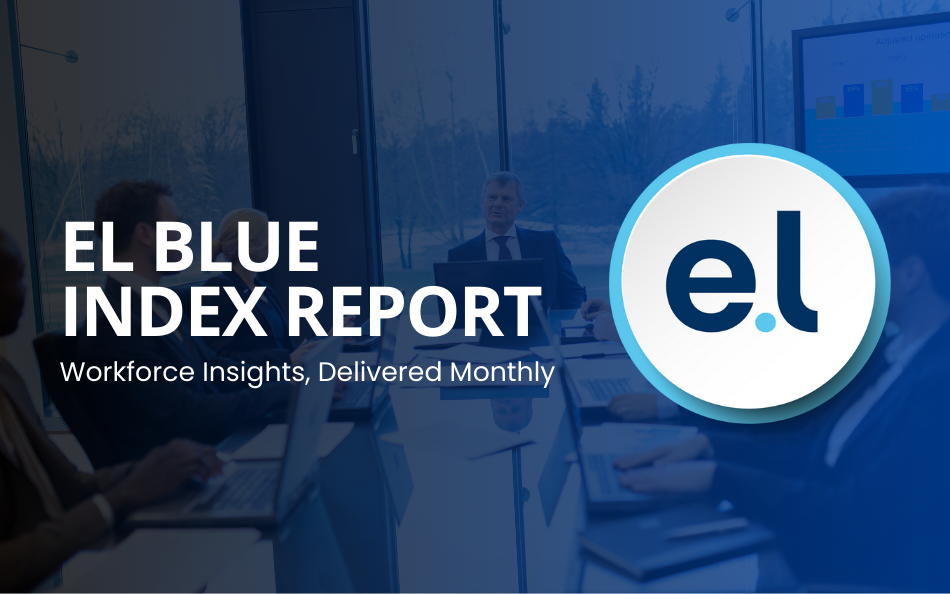Marketing Executive Jobs Decline Leading This Month’s E.L. Executive Demand Index overall decline.
A worrying signal for Australia’s short- and long-term economic outlook.
Government Spending and Executive Job Demand
Government spending continues to prop up executive job demand in Australia, but the broader market remains stagnant.
The latest E.L. Executive Demand Index shows a 2 per cent decline in September, reflecting a national economy caught between sluggish productivity growth and escalating trade tensions.
Marketing roles, despite falling more sharply than average this month, continue to, on average, to outperform all other executive sectors since the height of COVID-19 in 2021.
Market Volatility and Economic Signals
Grant Montgomery, Managing Director of E.L Consult, which has researched and published the E.L. Executive Demand Index for more than 30 years, said the Index remains volatile as business leaders grapple with mixed economic signals.
“The E.L Index continues to oscillate replicating business managers struggle to understand the direction of the Australian economy,” Mr. Montgomery said.
“While the international outlook remains uncertain and the share market hits new highs, domestic political forces are having a major influence.”
Public Sector Recruitment and Economic Dilemma
Mr. Montgomery noted that government sector hiring is continuing to grow despite federal ‘commitments’ to slow public service expansion.
“Public sector recruitment is supporting both the Index and overall employment at a time when migration — our only real source of economic growth — is relatively high,” he said.
“The Federal Government faces a dilemma: if it cuts hiring, unemployment will rise; if it slows migration, headline growth and tax revenues will weaken — exposing the structural weaknesses in the national economy.”
Bureaucracy and the Cost to Younger Australians
He added that increased government hiring ultimately places greater pressure on younger, tax-paying Australians and adds red tape for businesses.
“Hiring more public servants for roles that previously didn’t exist inevitably creates more bureaucracy and regulation designed to justify those roles,” he said.
Despite this month’s downturn, Marketing executives remain the most resilient category since 2021 and continues to expand on average.
Call Grant Montgomery on +612 9221 6688 or 0414926688 for further details
September 2025 Statistics
September 2025 National Index
September 2025 National Index: 469
Same period last year (September 2024): 680
Percentage change over last month: -2%
National Summary
Overall executive demand fell 2 per cent in September compared with the previous month, moving away from its lows. It is the first consecutive month of gains since January 2007. Executive demand began to fall in February 2008 and has again been an excellent predictor of trends in the general economy and employment market. Concerns remain that the fiscal stimulus package now making its way through to the executive job market is pulling money forward, thereby leaving the economy open to a ‘W’-shaped recovery.

National Demand for Executives Over Last Seven Years
The three-monthly trend has risen for the first time since May 2008 as a result of a positive last two months. In trend terms we are clearly off the lowest point. The three-monthly trend has risen for the first time since May 2008, benefiting from two consecutive months of gains. The trend figure this time around seems to have reached its bottom or is close to it.


State by State Comparison
Strong performances out of NSW and Victoria allowed the overall positive result despite some small losses in the other states. In particular, gains in the Finance positions in NSW and Engineering in Victoria. Apart from South Australia, which showed gains in all sectors except Marketing, the smaller states and territories experienced slight falls.

Executive Groups
All sectors were positive except for private sector management positions. There were significant increases in the financial sector for New South Wales government positions. Other significant gains included the Tasmanian and ACT Marketing. (no doubt pushed up by their resources sector)
September 2025 E.L Finance Index
September 2025 E.L Finance Index: 751
Same period last year (September 2024): 1003
Percentage change over last month: -5%
As we seem to be coming out of the other side of the financial crisis, the Financial Index produced another gain – its third consecutive flat or positive result. The Index gained 6 per cent compared with the prior month.
Although many states and territories produced gains larger than the overall 6 per cent increase, including New South Wales, Tasmania and the ACT, minor losses in Queensland and Western Australia reduced the overall result.
Internet-based advertising took on most of the increase in September, with print-based ads recording a largely flat result.


September 2025 E.L Engineering Index
September 2025 E.L Engineering Index: 223
Same period last year (September 2024): 280
Percentage change over last month: 4%
The 5 per cent gain in the Engineering Index is an encouraging signal as to the future health of the economy as engineers tend to be employed on longer-term infrastructure projects. Engineering is also a leading indicator as the sector tends to be used for house construction and other private building enterprises.
The government sector gained the most, with the gains particularly evident in Victoria, the ACT and Queensland. However, given its significant size, it was the reduction recorded by New South Wales that most brought down the overall result.
The Engineering index has clearly moved away from its lows recorded in April. In this the Engineering index is in front of the rest of the economy, where the full effects of the stimulus package have only been felt in the past couple of months.


September 2025 E.L Management Index
September 2025 E.L Management Index: 642
Same period last year (September 2024): 1033
Percentage change over last month: 4%
After experiencing a less hurtful 2008 than most other sectors, the Management Index is now lagging. In September it lost 1 per cent compared with the prior month.
As a proxy for the government sector and its hiring intentions, bureaucrats in Victoria and South Australia should be pleased as there were significant increases in demand there this month (although demand in those states was lower in the previous month).
However, in contrast to other sectors, New South Wales and Queensland’s negative results were enough to put the overall index into negative territory.


September 2025 E.L Information Technology Index
September 2025 E.L Information Technology Index: 148
Same period last year (September 2024): 348
Percentage change over last month: -1%
Information Technology has put together a run of three consecutive months of increases, rising 13 per cent in September showing an increasing readiness by corporate Australia to start investing capital in systems.
Gains in the ACT and New South Wales were enough to bring about the overall increase despite some losses in Queensland and Western Australia.
The increase in the value of the Australian dollar is potentially making internationally sourced hard and software cheaper for Australian businesses.


September 2025 E.L Marketing Index
September 2025 E.L Marketing Index: 520
Same period last year (September 2024): 619
Percentage change over last month: -11%
Apart from Information Technology, where its percentage movements are exaggerated by the relatively small amount of jobs on offer, the Marketing index was again the best-performing of the sector indices, gaining 7 per cent versus the prior month.
The gains were quite widespread across the larger states, particularly New South Wales, Victoria and the ACT. Queensland’s losses were mainly concentrated in the government sector but were minor compared with the overall gains in the other regions.
Both web and print advertising rose over the month, with internet-based ads producing most of the impetus for the positive result.


About the E.L Index
The E.L Index is a comprehensive monthly analysis of employment trends at executive level. An Australian analysis is produced in Sydney and an Asian analysis in Hong Kong and Singapore.
The E.L Index has shown by two separate University studies to correlate strongly with general economic and business trends. It is featured by most of the major news services and is closely followed by government and central bank analysts.
The E.L Index is actually a combined national index of all executive demand made up of five separate indices; E.L Finance Index, E.L IT Index, E.L Management Index, E.L Marketing Index and the E.L Engineering Index.
The National and specific career group Indexes are shown as relative indexes recording the monthly demand activity for executive positions in the current month against the demand in a historical base period which is normalised to 100. The historical base period used was the average of the last quarter of 1992 which research showed to be the bottom of that downturn.
By averaging to a historical base period the comparison of, say, June 1994 to June 2000 is meaningful, giving a clean, easily understood appreciation of changing investment and economic trends without seasonal obscurity.
The E.L Index utilises data from both print and internet sources and is the only employment index to do so.
The print data is collected from the major employment paper in each state. National papers are not used to avoid “doubling up”. Internet data is not collected off the web sites which can be subject to some error but instead collected through raw data provided by the ISP themselves. Print data has over 15 years of historical data and the internet more than 6 years.
Why Executive Demand is a Primary Lead Indicator?
It is often claimed that unemployment figures and broad-based job vacancy surveys do not give a fair impression of what is occurring in executive ranks. The E.L Index addresses this and has some interesting correlative and predictive qualities. Such as:
- Employment of management usually precedes the employment of skilled and unskilled workers.
- Employment of engineering executives precedes major capital investment.
- The division between various management sectors gives an indication of which sectors of the economy are experiencing growth or decline.
- Compares month by month changes in the public and private sector as well as monitoring government expenditure patterns.
- Makes regional comparisons after allowing for population differences.
- It shows a ‘rate of change’ and can therefore be realistically compared to general economic and employment growth unlike some surveys that report absolute numbers.
- Core data is collected on an actual expenditure of business and government, not on a respondent’s opinion or confidence level.


